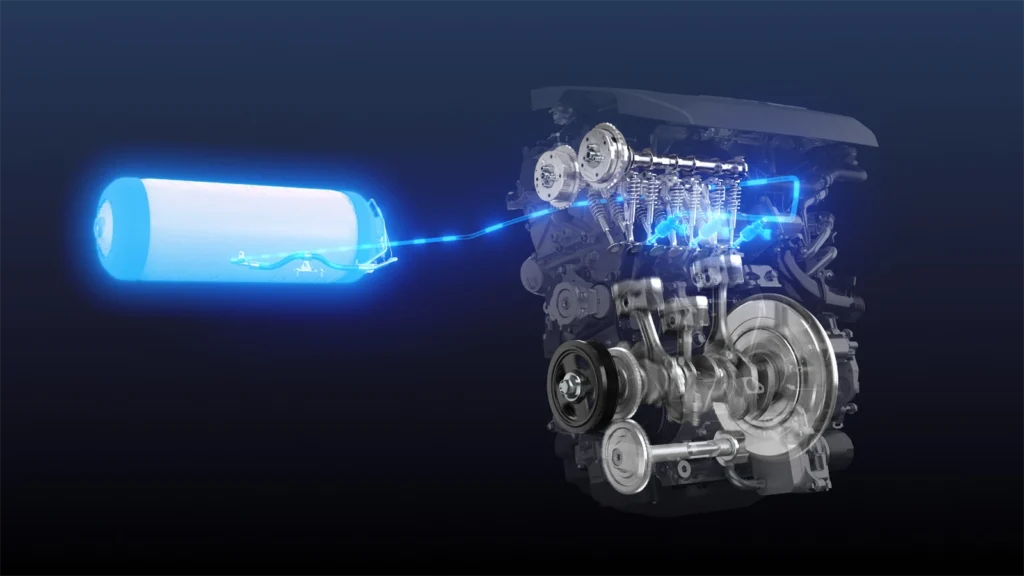
A game-changing partnership powers a clean-energy leap in California
The United States is gearing up to take center stage in hydrogen innovation. A groundbreaking collaboration between academic powerhouses and industry leaders has led to the launch of a blue hydrogen engine set to hit the market in California. This initiative is being hailed as a bold move to position the U.S. as a global hydrogen leader.
Academic institutions take the lead
In a rare and powerful alliance, the University of Michigan and the University of California have joined forces to roll out this pioneering blue engine. The project reflects a strategic push to surpass global competitors like China, Japan, and Germany in hydrogen fuel development.
Georgios Karavalakis, a professor of chemical and environmental engineering at UCR, put it plainly:
"The U.S. has immense potential to lead in hydrogen fuel innovation, but significant barriers in infrastructure, policy, and public awareness have slowed progress. While the technologies exist, they are costly due to complexity and the need for expensive raw materials."
That challenge hasn’t stopped the coalition from moving forward. As part of this initiative, the Hydrogen Engine Alliance of North America (H2EA-NA) was formed to support development, testing, and education.
>> RELATED: ExxonMobil Partners with Worley for Groundbreaking Blue Hydrogen Facility in Texas

H2EA-NA: Building momentum
The Hydrogen Engine Alliance of North America (H2EA-NA) is now making waves with plans to host its first-ever North American Hydrogen Engine Conference this May in Riverside, California. The event signals serious intent.
Modeled after successful hydrogen partnerships in Europe—like the European Clean Hydrogen Alliance and Germany’s Allianz Wasserstoffmotor—H2EA-NA is focused on shaping a North American pathway.
The alliance’s leadership includes André Boehman, the U-M Vennema Professor of Engineering and director of the Walter E. Lay Automotive Engineering Laboratory, and Georgios Karavalakis, who will oversee research into combustion engines, low- and zero-carbon fuels, and transportation emissions.
Is hydrogen ICE the missing link?
One of the most interesting aspects of this project is its focus on internal combustion engines (ICEs) powered by hydrogen. While many are looking to battery electric or fuel cell vehicles, hydrogen ICEs could fill in performance gaps.
Southwest Research Institute recently showcased a hydrogen-powered heavy-duty truck engine. The results showed significantly lower NOx emissions, a big win considering the environmental concerns tied to conventional ICEs.
André Boehman emphasized this point:
"Using hydrogen in internal combustion engines offers a low-carbon, long-term solution for transportation, particularly in applications where battery electric or fuel cell vehicles may not meet consumer performance requirements."

>> In Other News: Willis Sustainable Fuels Progresses Teesside SAF Project
California: The launchpad for blue engines
California is no stranger to leading on clean energy. It makes sense that this state would host the rollout of this new blue hydrogen engine. And with the H2EA-NA conference just weeks away, there’s a sense of urgency and excitement.
The blue engine’s development has been backed by multiple funding sources, including company membership fees and support from the nonprofit U.C. Riverside Foundation. That said, the path forward isn’t cheap—but the long-term potential for energy independence and climate progress makes it worthwhile.
Why this matters
This partnership doesn’t just show technical innovation—it shows strategic alignment. The U.S. has long been behind in hydrogen infrastructure. But with academic institutions, nonprofits, and industry players all rowing in the same direction, things are changing fast.
This move also reflects growing urgency around geopolitical energy independence. Reducing petroleum reliance is more than a climate issue—it’s an economic and security play. That’s why the outcomes of this hydrogen push will ripple beyond transportation.
What’s next?
In just a few weeks, Riverside will host experts, engineers, researchers, and decision-makers to kick off H2EA-NA’s mission. If all goes to plan, this blue hydrogen engine could mark the start of something much bigger for U.S. energy policy.
Blue engines, green energy—America may finally be ready to lead the charge.
Subscribe to the newsletter
Daily decarbonization data and news delivered to your inbox
Follow the money flow of climate, technology, and energy investments to uncover new opportunities and jobs.
Latest issues
-
The CO₂ Pipeline Everyone Said Couldn’t Happen
Inside This Issue 🛠️ Tallgrass Found the CO2 Pipeline Formula Others Missed 🚂 HyOrc & Zeltech Advance Practical Locomotive Retrofit Pathway as U.S. Rail Emissions Face Growing Scrutiny 💰 Secre...
-
How 45Q Credits Revived This Troubled $9B Megaproject
Inside This Issue 💰 How 45Q Credits Revived This Troubled $9B Megaproject 🍁 Commencement of First Phase Operations for a Carbon Capture and Storage (CCS) Project in Canada 🤝 Haffner Energy Secures...
-
The Deal Structure Everyone's About to Copy
Inside This Issue 💼 The Deal Structure Everyone's About to Copy 📈 Exxonmobil Raises Its 2030 Plan – Transformation Delivering Higher Earnings, Stronger Cash Flow, and Greater Returns ⚡ Nextera Wor...
Company Announcements
-
C2X to Deliver 3.6 Million Metric Tons of Carbon Removal to Microsoft Over 12 Years
HOUSTON, TEXAS, December 11, 2025: C2X Ltd. has, through its subsidiary Beaver Lake Renewable Energy LLC (Beaver Lake), signed a long-term agreement with Microsoft for the sale and purchase of high...
-
Sandpiper Chemicals Selects Air Water Gas Solutions as ASU Provider for Its Blue Methanol Facility
Sandpiper Chemicals, LLC is pleased to announce that it has selected Air Water Gas Solutions Inc. as its presumptive industrial gases supplier for its Texas City, TX blue methanol facility. Air Wa...
-
SOUTH SAN FRANCISCO, Calif. — (BUSINESS WIRE) — Ebb, a climate and water technology company, has signed a prepurchase agreement with Google to remove 3,500 tons of CO₂ from the atmosphere. The agre...
-
KBR Awarded Green Ammonia Project by IGNIS in Spain
HOUSTON, Dec. 15, 2025 (GLOBE NEWSWIRE) — KBR, Inc. (NYSE: KBR) announced today that it has been awarded a technology and engineering contract by IGNIS for a new green ammonia facility in A Coruña,...